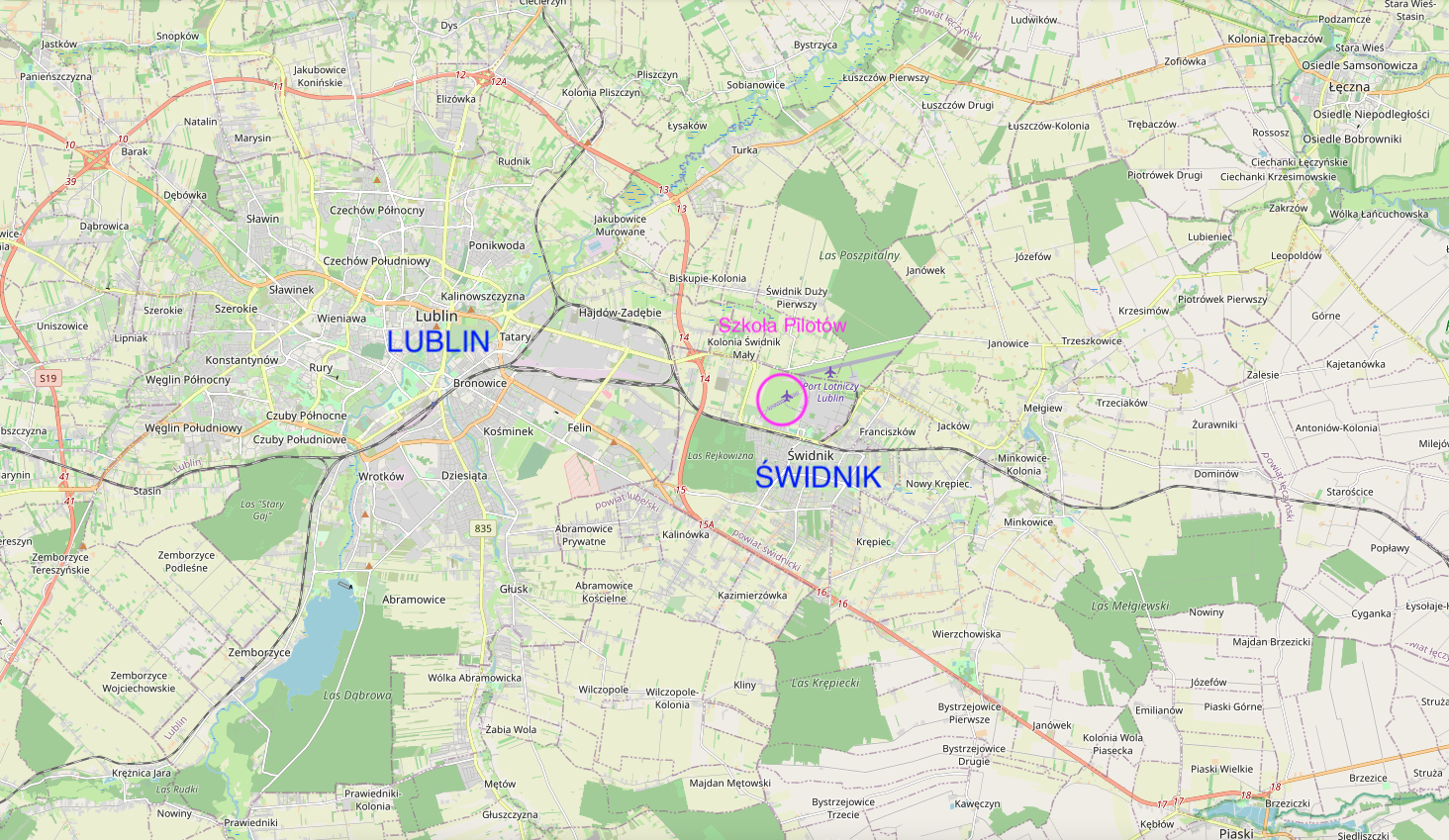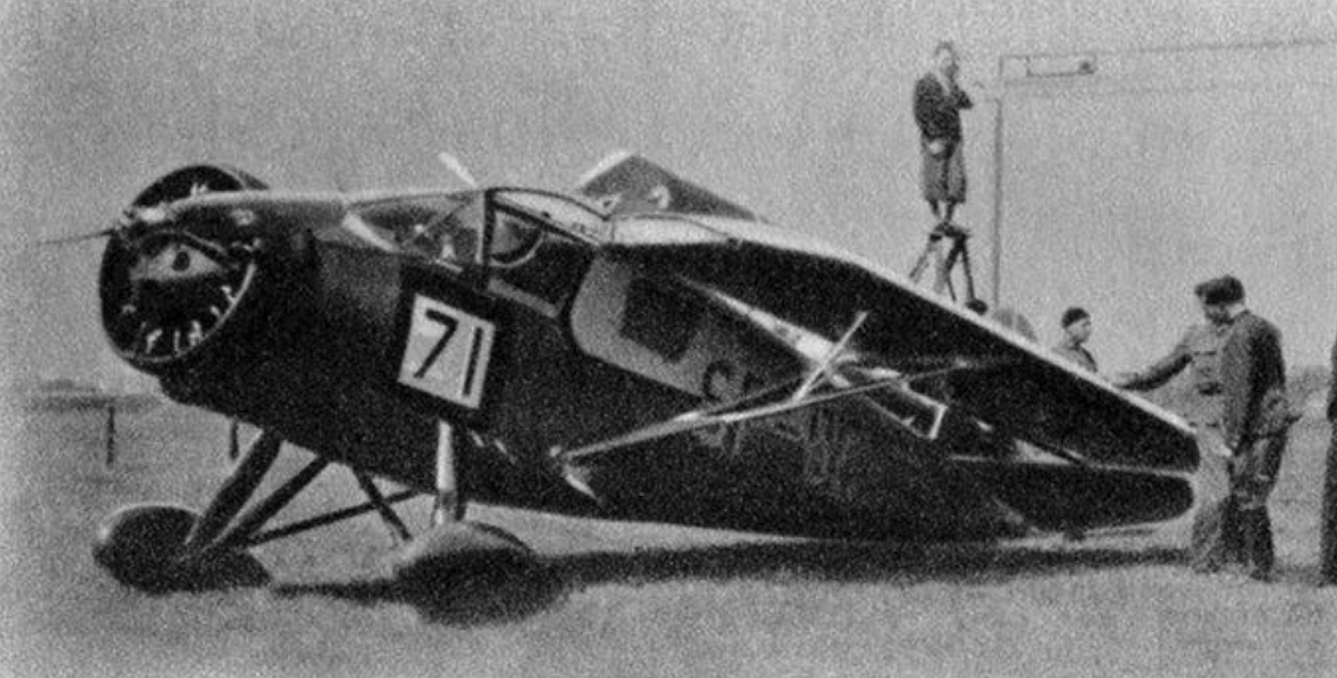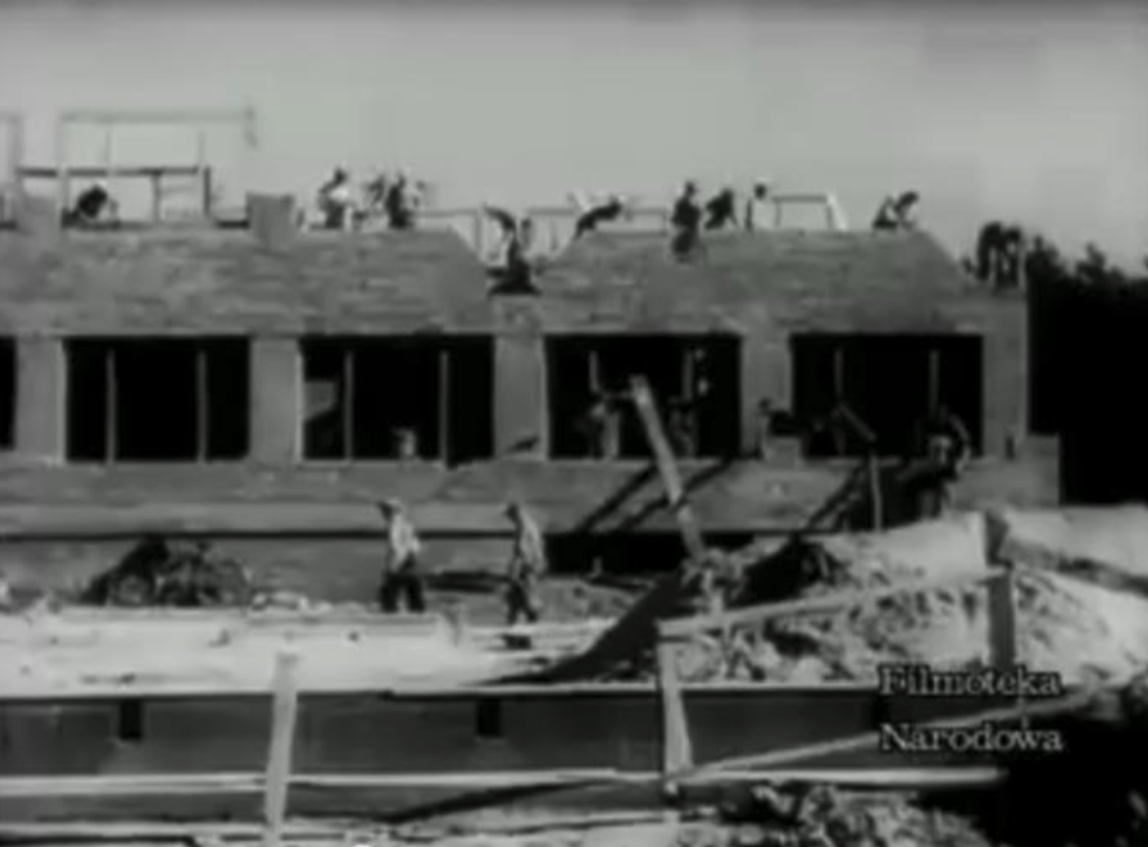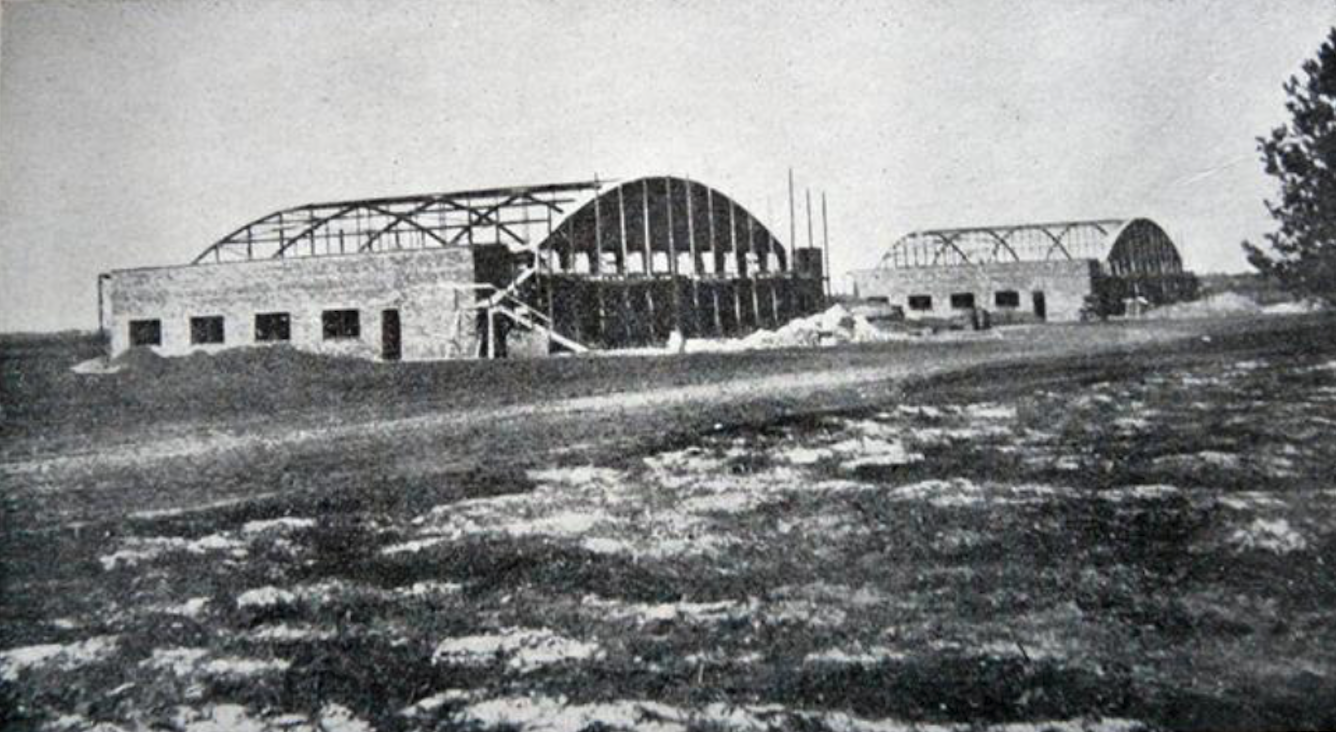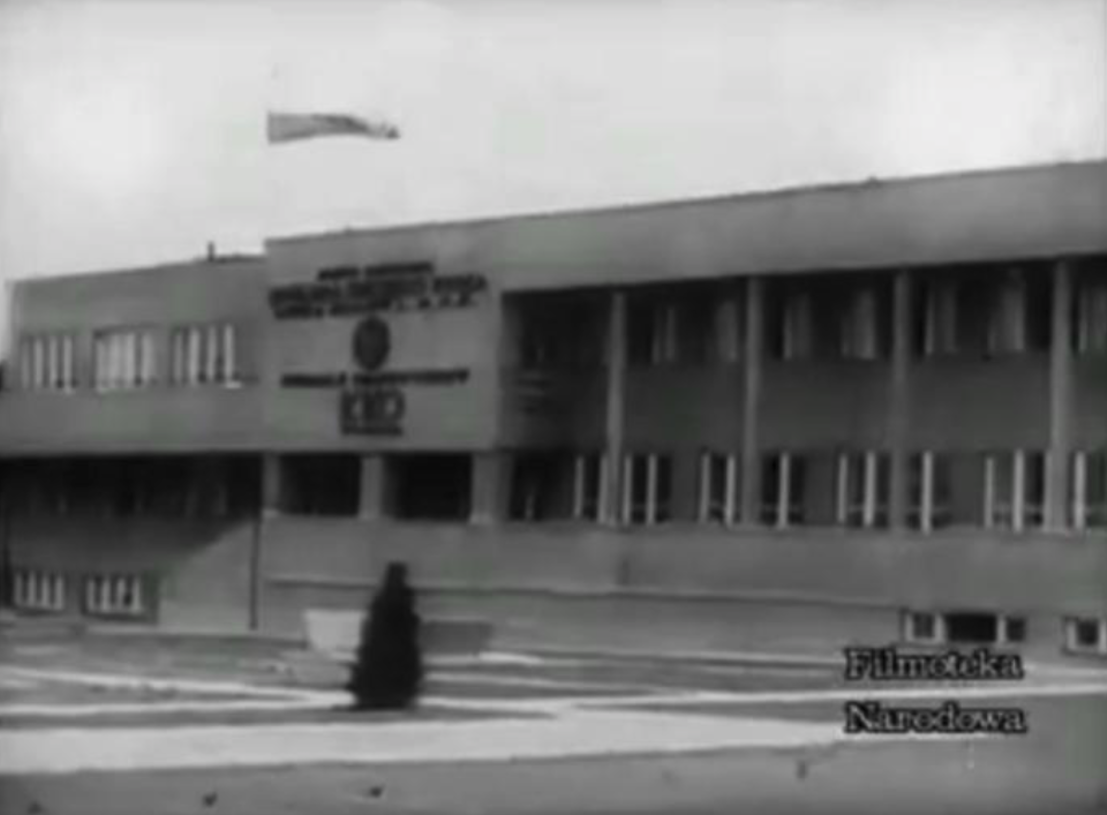Świdnik 2013-10-19
Lotnisko i Szkoła Pilotów. 1934 rok.
Współrzędne geograficzne: 51.231N 22.691E.
Rzeczypospolita Polska po odzyskaniu po 123 latach niepodległości (1918 rok) z odwagą przystąpiła do budowy silnej gospodarki i dostatnich warunków życia dla jej obywateli. Lotnictwo było jedną z tych dziedzin, która się dynamicznie rozwijała.
Już w 1934 roku, zapadła decyzja o budowie lotniska koło Lublina. Stało się to po zwycięstwie kapitana pilota Jerzego Bajana w czwartych Międzynarodowych Zawodach Samolotów Turystycznych, zwanych Zawody Challenge (Challenge International de Tourisme) w 1934 roku, na samolocie RWD-9. Samolot ten był zakupiony dzięki dobrowolnym składkom mieszkańców Lubelszczyzny.
Celem nie było tylko zbudowanie lotniska. Celem było utworzenie Szkoły Pilotów. Głównym inicjatorem przedsięwzięcia stał się Zarząd Główny Ligi Obrony Powietrznej i Przeciwgazowej (LOPP). Ta organizacja także w części finansowała inwestycję. Reszta funduszy pochodziła z dobrowolnych składek społeczeństwa oraz Komunalnej Kasy Oszczędnościowej. W KKO (Komunalna Kasa Oszczędnościowa) powołano specjalny komitet, który na budowę szkoły przeznaczył 500 000 złotych. Inicjatywę budowy szkoły i lotniska poparło Dowództwo Lotnictwa, wydając specjalną dyrektywę. Szkole nadano imię Marszałka Edwarda Śmigłego Rydza.
Pod obiekt wykupiono teren o powierzchni 146 hektarów od zakonu Sióstr Szarytek. Budowę rozpoczęto wiosną 1935 roku. Pierwsze prace polegające na zniwelowaniu terenu wykonali mieszkańcy okolicznych miejscowości, własnymi końmi i własnym sprzętem. Jesienią 1937 roku, rozpoczęto budowę dwóch nowoczesnych hangarów, obiektów technicznych z podziemną bazą paliwową i budynku administracyjno-internatowego.
Opis zdjęcia: Na zdjęciu widzimy budowę dwóch hangarów Szkoły Pilotów. W czasach Polski komunistycznej to zdjęcie podpisywano – „Budowa zakładu”, a miano na myśli PZL WSK Świdnik.
W dniu 4 czerwca 1939 roku, Szkoła Pilotów i Lotnisko zostało uroczyście otwarto. Było to podczas obchodzonych uroczystości – Dni Lublina, Zamościa i Lubelszczyzny. Naczelny wódz marszałek Edward Śmigły-Rydz przybył na oficjalne otwarcie i poświęcenie Szkoły Pilotów LOPP. Na lotnisku stawili się także: generał Schally i major Hartman, minister komunikacji pułkownik Ulrych, wiceministrowie Korsak i Piasecki, wojewoda lubelski de Tramecourt, prezes zarządu głównego LOPP generał broni inż. Leon Berbecki, dowódca Okręgu Korpusu Nr II generał Smorawiński, przedstawiciele zarządu Lublina, KKO, związków, instytucji i organizacji społecznych.
Uroczystości otwarcia Szkoły Pilotów w Świdniku były okazją do demonstrowania patriotycznych postaw Polskiego społeczeństwa. Ewidentne zagrożenie suwerenności Rzeczypospolitej Polski przez armię germańską i armię sowiecką powodowało, że organizowano oddolne inicjatywy zbierania pieniędzy i kosztowności i przekazywania ich na zakup uzbrojenia dla Polskiej Armii. W dniu 4 czerwca 1939 roku, lubelska młodzież na ręce marszałka Edwarda Śmigłego-Rydza przekazała trzy ciężkie karabiny maszynowe. Z kolei w samym Lublinie, z podobnej inicjatywy na rzecz Wojska Polskiego przekazano 50 samochodów sanitarnych. Podobne inicjatywy prowadzono w innych miastach Rzeczypospolitej Polski.
Szkoła Pilotów w Świdniku rozwijała się niezwykle dynamicznie. Nie była jedyną, ale była największą w Polsce. Uczniowie otrzymywali umundurowanie, zakwaterowanie i wyżywienie. Podstawowymi przedmiotami były te związane z lotnictwem oraz obroną chemiczną. Te kierunki wynikały z doświadczeń wielkiej wojny światowej. Poza nauką teorii i praktyki uczniowie wykonywali wiele prac wykończeniowych. Szkoła była stale rozbudowywana. W czasie wolnym chętnie korzystali w basenu przeciwpożarowego, który pełnił także funkcje pływalni. W ostatnich dniach pokoju na lotnisku wykopano rowy przeciwlotnicze, przygotowując się do obrony.
Agresja armii germańskiej i sowieckiej. 1939 rok.
W dniu 1.09.1939 roku, armia germańska napadła na Polskę. Szkoła Pilotów i Lotnisko zbombardowały germańskie samoloty. Lotnisko zostało uszkodzone, lecz główne obiekty szkoły się zachowały.
W dniu 2.09.1939 roku, komendant Policji Państwowej powiatu lubelskiego napisał w raporcie do starosty lubelskiego: „Donoszę, że w dniu 2.09.1939 roku, o godzinie 08:30 był nalot samolotów niemieckich na lotnisko w Świdniku. Skutki nalotu: 6 osób zabitych, z czego 2 wojskowych, 3 cywilnych zatrudnionych przy pracy i 1 kobieta pracująca obok lotniska, 9 osób rannych, hangar uszkodzony i nowo budowany budynek na lotnisku. W lesie spadło około 100 bomb. W kolonii Franciszków upadło 50 bomb, 5 niewypałów. Strat w ludności nie było. Biuro kolejowe nieuszkodzone. Linia telefoniczna pomiędzy Świdnikiem, a Lublinem przerwana. Prowadzi się wywiady w kierunku ustalenia tożsamości osób zabitych.”
W kolejnym raporcie policji podano: „Zgłaszam, że w dniu 4.09.1939 roku, o godzinie 16:30, w kolonii Franciszków zatrzymany został przez patrol w Mełgwii Karol Gryc syn Jerzego i Katarzyny (ur. 16.01.1883 roku, w miejscowości Żyżlice powiat Cieszyn, wyznania ewangelickiego, zamieszkały w Cieszynie), podejrzany o szpiegostwo. Zatrzymany posiadał przy sobie dwie mapy Lublina, w notesie naszkicowany plan lotniska w Świdniku, 4 odcinki meldunkowe in blanco z pieczęciami Cieszyn. W dniu 28.08.1939 roku, przybył do Adampola, gdzie zamieszkał bez zameldowania się. Wymieniony odprowadzony został do placówki oficerskiej w Lublinie, gdzie został zatrzymany. Dowody pozostały w placówce.”
W dniu 17.09.1939 roku, armia czerwona wkroczyła na tereny wschodniej Rzeczypospolitej Polski, atakując Polskie Wojsko i Policję. Szanse na skuteczną obronę zostały pogrzebane. Nastał czas okupacji niemiecko-radzieckiej.
W czasie okupacji armia niemiecka wykorzystywała lotnisko do własnych celów wojskowych. Urządzili tutaj własną szkołę lotników. Wiosną 1944 roku, przystąpili do budowy betonowej drogi startowej, którą nie ukończyli. Z tego okresu pochodzi wiele zdjęć, na których germańcy prężą piersi do obiektywu. Niemiecka szkoła funkcjonowała do lipca 1944 roku, kiedy to ewakuowano ją przed nadchodzącymi sowietami.
Raport wywiadu wojskowego Armii Krajowej, z maja 1944 roku, informował: „Załoga lotniska Świdnik wynosi około 1 000 osób. Na terenie rejonu I artyleria przeciwlotnicza niemiecka zajęła: na 1 kol. Prawiedniki (przy gospodarstwie Samborskiego i Klimka), na 1 kol. Zemborzycka (na odcinku od stacji kolejowej do gospody) i na wsi (koło gospodarstwa Golijanka przy trakcie „Tatarówka") stanowiska dla swej broni. Poza tym dookoła lotniska Świdnik: na Świdniku Starym, Kazimierzówce, w Janowicach, Krępcu ustawione są reflektory – ilość ich nieustalona, z wyjątkiem Krępca. Są tam 2 reflektory (jeden koło szkoły, drugi koło młyna), oba ubezpieczone – 1 ckm i kilkunastu ludzi obsługi.”
Tuż przed wycofaniem się wojsk niemieckich obiekty szkoły (dwa duże budynki) i dwa hangary zostały wysadzone w powietrze i doszczętnie zniszczone.
Okupacja niemiecka to okres upodlenia i upokorzenia Narodu Polskiego. Lubelszczyzna była przeznaczona wyłącznie dla osadników niemieckich. Niemniej na tych terenach skutecznie działały oddziały Armii Krajowej. W okolicach Lublina i Świdnika partyzantka prowadziła udane akcje. Najpierw przeciw okupacji niemieckiej, a później przeciw okupacji komunistycznej. To na ziemiach dzisiejszego powiatu świdnickiego, aż do 1963 roku, działał i ukrywał się ostatni żołnierz Polskiego Podziemia Niepodległościowego Józef „Lalek” Franczak. On i jego żołnierze zostali wytropieni i zamordowani przez komunistów właśnie w 1963 roku. Chwała bohaterom !
Opracował Karol Placha Hetman

